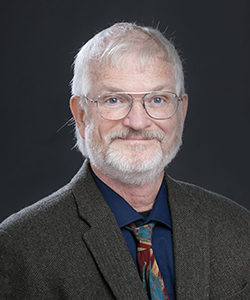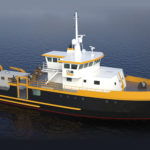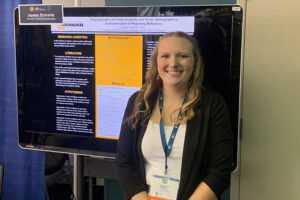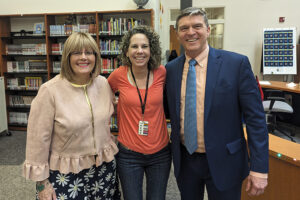Brian Armstrong was recently named a senior member of the National Academy of Inventors, the first faculty member at UWM to earn this honor. Armstrong — who is the inventor named on 22 patents with two others pending — is a professor and department chair, electrical engineering and computer science, in UWM’s College of Engineering & Applied Science.
“By any measure, 22 patented inventions is a rare accomplishment,” said Andrew Graettinger, the college’s associate dean for research. “Our faculty members are always innovating and working on pioneering research, and patent production at this level is tangible evidence of their success.”

National Academy of Inventors senior members are faculty, scientists and administrators who have demonstrated innovation producing technologies that stand to benefit society. Its 250 member institutions include Harvard, Massachusetts Institute of Technology, Princeton and University of Wisconsin-Madison.
Armstrong’s patents have been issued in 11 countries during his 31 years on UWM’s faculty. (The count includes 12 patents issued while he worked with start-up companies and during his one-year sabbatical at Eaton Corporation’s Innovation Center.)
Armstrong said his most significant work is moiré phase tracking, a disruptive 3D tracking technology based on optical moiré patterns. It holds applications in clinical imaging and physical therapy.
Moiré phase tracking can erase human motion from 3D images — for example, images captured during an MRI. “If a person moves during an MRI, the image is damaged,” Armstrong said. “MPT removes what’s known as motion artifacts in MR images, produced when a person moves. The result is a more robust and accurate image that is not damaged or compromised by motion.”
Based on moiré phase tracking, Armstrong co-founded Metria Innovation and served as the founding president. A medical device company is currently evaluating the technology’s applications to surgery.
Armstrong also has extensive experience in spatial sensing, estimation, robotics and real-time systems, and has worked with a number of other spatial sensing modalities, including microwave, array-Doppler radar. His patents hold applications in the fields of mechanical systems, spatial sensing, wireless communications and hydraulic motor control.
In April, Armstrong will be honored at the National Academy of Inventors annual meeting in Phoenix, along with the other 53 newly named academic inventors, all of whom are faculty, scientists or administrators from NAI member institutions.
Two faculty members were previously named NAI fellows: Pradeep Rohatgi in 2014 and Junhong Chen in 2018. NAI’s 1,060 fellows are academic inventors who have demonstrated a prolific spirit of innovation in creating or facilitating outstanding inventions that have made a tangible impact on quality of life, economic development and the welfare of society.







